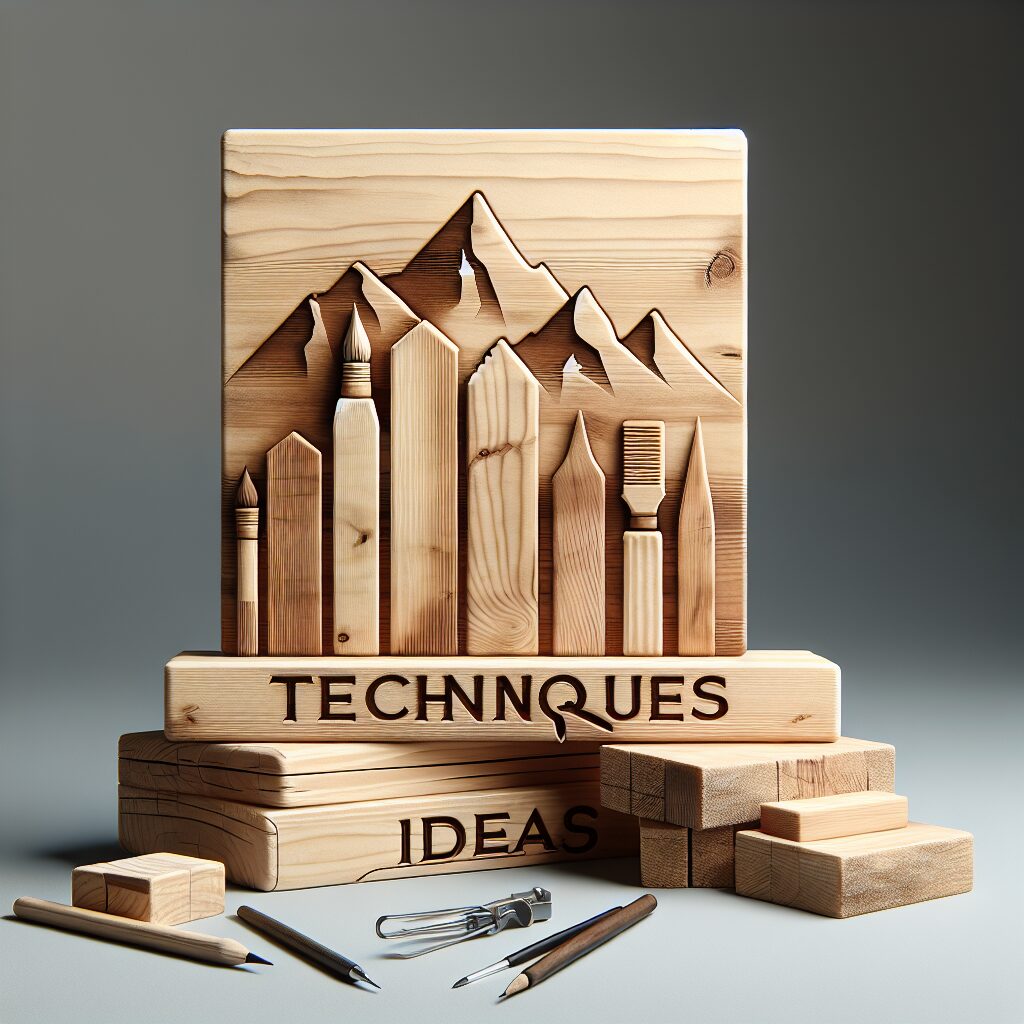Creating perfect joints is a cornerstone skill in woodworking, essential for building strong and aesthetically pleasing projects. Whether you’re a novice or an experienced woodworker, understanding the nuances of joint techniques can greatly enhance your craftsmanship. This guide will explore various methods and tips to help you achieve flawless joints that not only hold up structurally but also add beauty to your work.
Understanding Different Types of Joints
There are numerous types of joints used in woodworking, each serving a unique purpose and offering different advantages. The most common joints include butt joints, miter joints, and dovetail joints. Each of these methods has its own set of techniques that can significantly affect the overall strength and appearance of your final piece.
For instance, a butt joint is one of the simplest forms of joining two pieces of wood together, but it often requires reinforcement for added strength. On the other hand, a dovetail joint is recognized for its interlocking design, providing exceptional durability while also being visually appealing. Understanding these woodworking joinery methods is crucial for selecting the right joint for your project.
Choosing the Right Wood for Your Joints
The type of wood you select can significantly impact the effectiveness of your joints. Hardwoods, such as oak or maple, are typically more durable and provide better holding power compared to softwoods like pine or fir. However, softwoods can be easier to work with, especially for beginners. Choosing the right material not only affects the joint’s strength but also its aesthetic appeal.
Additionally, consider the moisture content of your wood. Wood that is too dry or too moist can lead to issues like warping or cracking, which can compromise your joints. Properly acclimating your wood to the environment before starting your project is essential for achieving the best results. For more advanced techniques, you may want to explore various wood finishing techniques that can complement your joints and enhance the overall look of your work.
Tools and Equipment for Perfect Joints
Using the right tools is vital for achieving perfect joints in woodworking. Essential tools include clamps, chisels, saws, and measuring devices. Each tool plays a specific role in ensuring accuracy and precision during the joint-making process. For example, clamps help hold pieces together firmly while they are being joined, preventing any movement that could cause misalignment.
Moreover, investing in high-quality equipment can make a noticeable difference in the quality of your joints. A well-calibrated saw will provide cleaner cuts, while sharp chisels will help achieve precise joints without tearing the wood fibers. Taking the time to ensure your tools are well-maintained will not only prolong their lifespan but also improve your overall woodworking experience.
| Joint Type | Strength | Difficulty |
|---|---|---|
| Butt Joint | Low | Easy |
| Dovetail Joint | High | Hard |
| Miter Joint | Medium | Medium |
Achieving perfect joints in woodworking is a blend of skill, technique, and an understanding of the materials involved. Whether you’re a seasoned woodworker or just starting, knowing how to create strong and precise joints can greatly enhance the overall quality of your projects. In this section, we will explore various methods and tips to help you master the art of woodworking joints.
Understanding Different Types of Joints
Woodworking joints come in many forms, each suited for different applications and styles. For instance, the mortise and tenon joint is renowned for its strength and ability to withstand stress, making it a popular choice in furniture making. Alternatively, the dovetail joint is often used in drawer construction due to its aesthetic appeal and mechanical strength. Understanding the specific characteristics of each joint type is crucial for selecting the right one for your project.
When creating joints, consider the wood species you are working with. Hardwoods, such as oak or maple, may require different techniques compared to softwoods like pine. Knowing how to choose the right wood glues can also impact the durability of your joints. A strong adhesive not only enhances the bond but also compensates for any minor imperfections in the joint itself.
Precision and Tools for Perfect Joints
Using the right tools is essential for achieving precision in your joints. A well-calibrated table saw, for example, can help you make clean cuts that are critical for tight-fitting joints. Additionally, a router can be a versatile tool for shaping edges and creating grooves. Learning some innovative router techniques can significantly improve your joint-making capabilities.
Moreover, jigs are invaluable when it comes to ensuring consistent results. They help guide your cuts and maintain accuracy, especially for repetitive tasks. Exploring various types of jigs can provide you with the tools you need to create joints that fit perfectly every time. Investing in quality jigs can save you time and resources in the long run, making your woodworking experience more enjoyable and efficient.
Perfect joints are the hallmark of quality woodworking, elevating your projects from ordinary to extraordinary. Achieving these flawless connections requires a blend of skill, the right tools, and a deep understanding of woodworking techniques. As you refine your craft, you’ll discover that the journey to perfect joints is as rewarding as the finished product itself.
Understanding Joint Types
Before delving into the techniques for achieving perfect joints, it’s essential to understand the various types of joints available in woodworking. Each joint serves a specific purpose and can greatly affect the strength and aesthetics of your project. For instance, butt joints are simple but may lack strength, while dovetail joints offer both durability and visual appeal. Knowing when to use each type of joint is crucial for the overall success of your woodworking endeavors.
Moreover, the choice of joint can also influence the tools and methods you’ll employ. For example, creating a mortise and tenon joint requires different tools than a simple butt joint. Therefore, familiarizing yourself with these various joints will help you choose the right approach for your specific project needs.
As you work with different joints, remember that practice makes perfect. Experimenting with various types of joints will not only enhance your skills but also help you understand the strengths and weaknesses of each. This knowledge will empower you to make informed decisions in your woodworking projects.
Techniques for Achieving Perfect Joints
To achieve perfect joints in woodworking, precision and attention to detail are paramount. One of the most effective techniques is to ensure that all parts fit together snugly without gaps. This can be accomplished by accurately measuring and cutting each piece of wood. Using high-quality tools, such as a table saw or a miter saw, can significantly improve the accuracy of your cuts.
Another crucial technique involves the use of woodworking adhesives. A strong adhesive can make a significant difference in the integrity of your joints. When applying glue, be sure to follow the manufacturer’s instructions for the best results. Additionally, clamping the joint while the adhesive cures will help ensure a solid bond. Consider using templates to guide your cuts and improve consistency across multiple joints.
Finally, sanding and finishing play an essential role in achieving perfect joints. After assembling your project, sand the joints lightly to remove any excess glue or uneven surfaces. This step not only enhances the appearance of the joints but also ensures a smooth transition between different pieces of wood. Finishing with a suitable product will further protect the joints and enhance the overall look of your project.
Continuous Improvement in Woodworking
Achieving perfect joints is a skill that improves with experience. As you continue to work on various projects, you’ll develop a sense of what works best for you and your style. Don’t hesitate to seek feedback from other woodworkers or join community groups to share tips and techniques. Continuous learning is key in this craft.
Moreover, keeping up with new tools and methods can also contribute to your growth as a woodworker. Innovations in woodworking technology can make achieving perfect joints easier and more efficient. Stay curious and open to experimenting with new approaches, as this will only enrich your woodworking journey.
In conclusion, perfect joints are not merely a goal but a reflection of your dedication to the craft. By mastering the various joint types, honing your techniques, and embracing continuous improvement, you can elevate your woodworking projects to new heights. Remember, each project is an opportunity to learn and grow as a craftsman, so enjoy the process and celebrate your progress.






